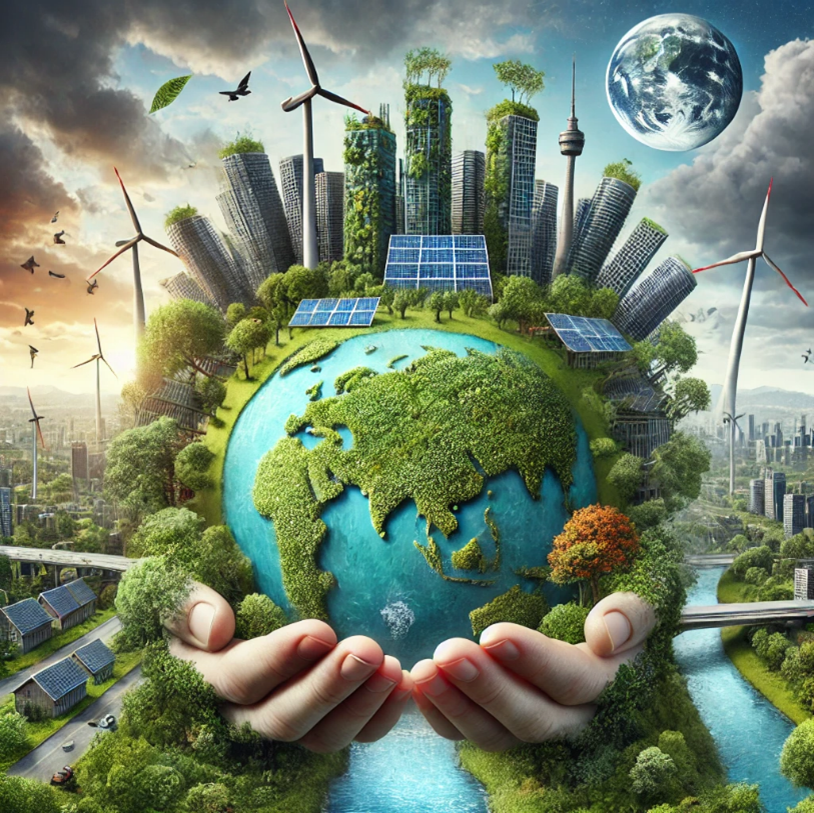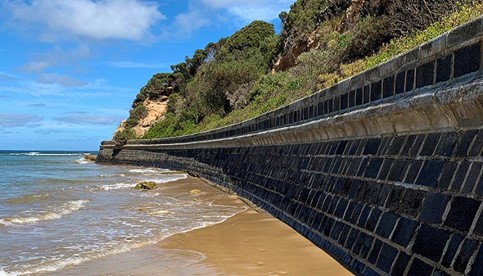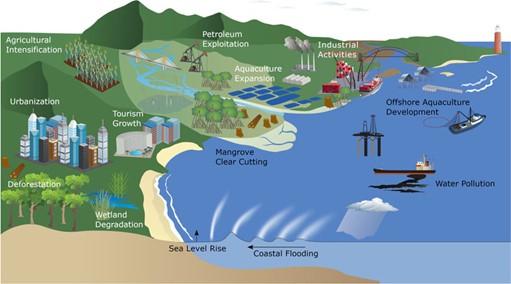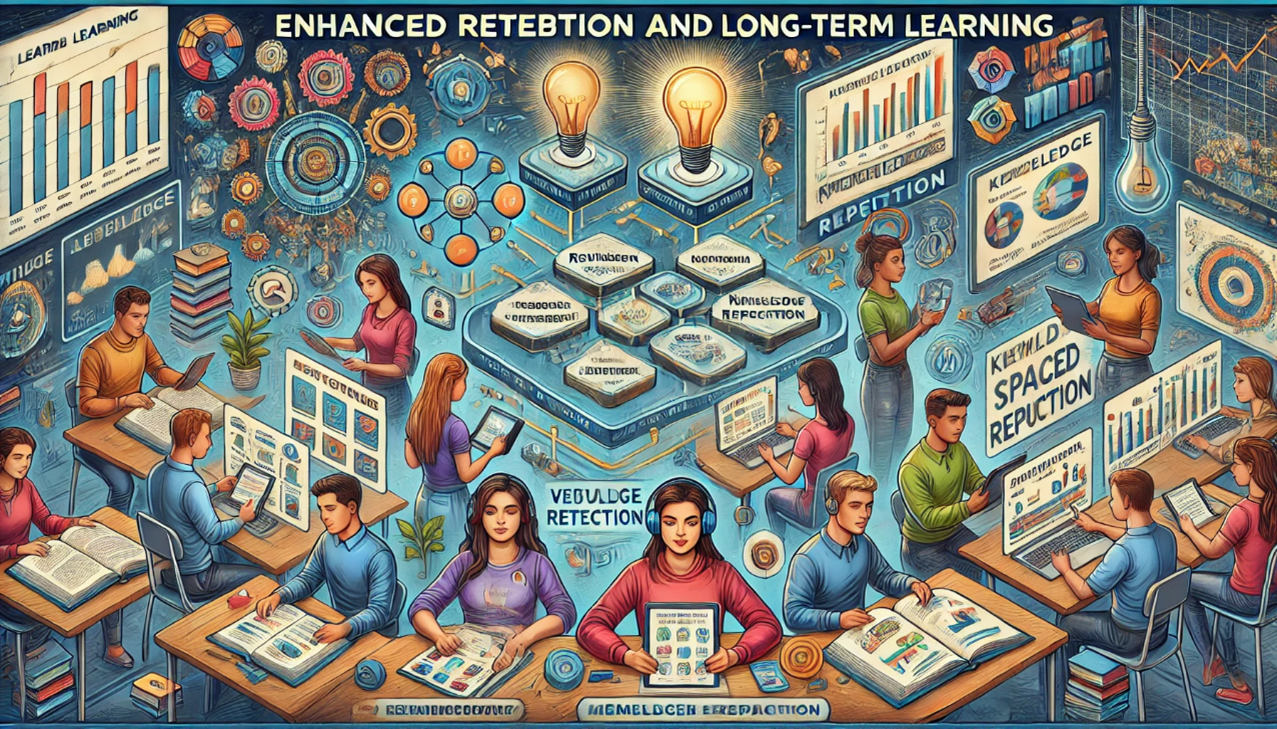How can coastal communities adapt to increasing climate threats?

How can coastal communities adapt to increasing climate threats?
by Maximilian 12:02pm Jan 08, 2025

Coastal communities are particularly vulnerable to the increasing climate threats posed by rising sea levels, extreme weather events, and other environmental changes. To protect themselves and adapt to these challenges, these communities can implement a range of strategies, including infrastructure modifications, natural solutions, and policy measures. Here are some key approaches to adaptation:
1. Coastal Protection Infrastructure:
Seawalls and Dikes: Constructing or reinforcing seawalls, dikes, and levees can help protect coastal areas from storm surges, rising sea levels, and flooding. These barriers act as a physical shield against high tides and extreme weather.
Floodgates and Storm Surge Barriers: In addition to seawalls, installing floodgates and storm surge barriers can help control water levels during extreme weather events. These systems can be designed to be closed during storms to prevent flooding.
Elevating Buildings and Infrastructure: Raising homes, businesses, and critical infrastructure (e.g., roads, bridges, power plants) above projected flood levels is a proactive approach to reducing flood risk. Elevated structures are less likely to be damaged by rising sea levels and storm surges.
Retrofitting Existing Infrastructure: For older buildings, retrofitting with flood-resistant materials, such as waterproofing, or adding flood vents to allow water to flow through can help reduce damage during floods.

2. Natural and Green Infrastructure:
Mangroves and Wetlands Restoration: Restoring natural ecosystems like mangroves, salt marshes, and wetlands can provide valuable protection against storm surges, coastal erosion, and flooding. These habitats act as natural buffers by absorbing wave energy and reducing flood risk.
Beach Nourishment and Sand Dunes: Adding sand to eroded beaches (beach nourishment) or building and maintaining sand dunes can help reduce coastal erosion and protect inland areas from rising seas. Dunes also provide habitat for wildlife and can be effective at dissipating wave energy.
Coral Reef Restoration: Coral reefs act as natural barriers against wave action, reducing the impact of storms and erosion. Restoring and protecting coral reefs can help mitigate some of the effects of rising sea levels and protect coastal areas from flooding.
Urban Green Spaces: Creating green spaces, such as parks, green roofs, and urban forests, in coastal cities can absorb rainwater, reduce urban heat islands, and improve air quality. These spaces can also provide recreational areas and enhance the overall resilience of urban areas.
3. Improved Coastal Planning and Zoning:
Climate-Resilient Urban Planning: Coastal communities can implement zoning regulations that restrict development in flood-prone areas or require new buildings to meet higher standards for flood resilience. Urban planning can incorporate setbacks, buffer zones, and floodplain mapping to guide development away from high-risk areas.
Managed Retreat: In some cases, the most sustainable option may be to relocate vulnerable communities or infrastructure away from the coast. Managed retreat involves strategically relocating buildings, roads, and other assets from flood-prone or eroding areas, and it can be combined with restoring natural habitats like wetlands.
Risk Assessment and Early Warning Systems: Communities can invest in climate risk assessments and early warning systems that provide timely information about potential storms, flooding, or sea level rise. These systems allow residents and local governments to take appropriate action, such as evacuations or emergency responses, to minimize damage.

4. Sustainable Water Management:
Coastal Floodplain Management: Effective floodplain management includes planning for floodwaters, controlling stormwater runoff, and protecting or restoring natural flood storage areas. This helps to manage water levels during storms and reduces the risk of flooding.
Saltwater Intrusion Prevention: Coastal communities can adopt measures to protect freshwater resources from saltwater intrusion, such as building barriers or managing groundwater extraction to avoid overuse of freshwater aquifers.
Rainwater Harvesting: Collecting and storing rainwater for use during droughts or periods of water scarcity can help ensure a reliable water supply, especially as freshwater resources become more stressed due to climate change.
5. Community Engagement and Capacity Building:
Public Awareness and Education: Coastal communities should prioritize educating residents about the risks posed by climate change and the importance of adaptation measures. Engaging the community in planning and decision-making can help build support for resilience strategies and increase overall preparedness.
Community-Based Adaptation: Encouraging local participation in adaptation efforts ensures that solutions are tailored to the specific needs of the community. Local knowledge and input can be crucial in developing effective, culturally appropriate strategies for adaptation.
Capacity Building and Training: Strengthening the capacity of local governments, businesses, and individuals to respond to climate risks is essential. This includes training in disaster preparedness, climate resilience, and emergency response.
6. Economic Diversification and Livelihood Protection:
Diversifying Livelihoods: Coastal communities that rely heavily on climate-sensitive industries like fishing and tourism can benefit from diversifying their economies. Developing new sectors, such as renewable energy (e.g., offshore wind), sustainable agriculture, or eco-tourism, can provide economic stability in the face of climate impacts.
Insurance and Financial Tools: Developing insurance schemes and other financial mechanisms can help communities recover from climate-related disasters. Financial tools like catastrophe bonds or climate risk insurance can provide funding for rebuilding and adaptation efforts.
7. Policy and Governance:
Climate-Resilient Policies: Governments at local, regional, and national levels can implement policies that promote climate resilience, such as carbon emissions reductions, renewable energy incentives, and green infrastructure investments.
International Cooperation: Coastal communities, especially in developing nations, can benefit from international support in terms of funding, technology transfer, and knowledge sharing. Global cooperation is key to addressing the shared challenges of climate change.
Disaster Risk Reduction (DRR): Governments and communities can incorporate disaster risk reduction into long-term planning, ensuring that climate adaptation is integrated into broader disaster management strategies.

Conclusion:
Adapting to increasing climate threats requires a multifaceted approach that combines infrastructure, natural solutions, effective governance, and community engagement. By implementing these strategies, coastal communities can reduce their vulnerability to rising sea levels, extreme weather events, and other climate impacts, while enhancing their resilience and sustainability in the face of a changing climate.






